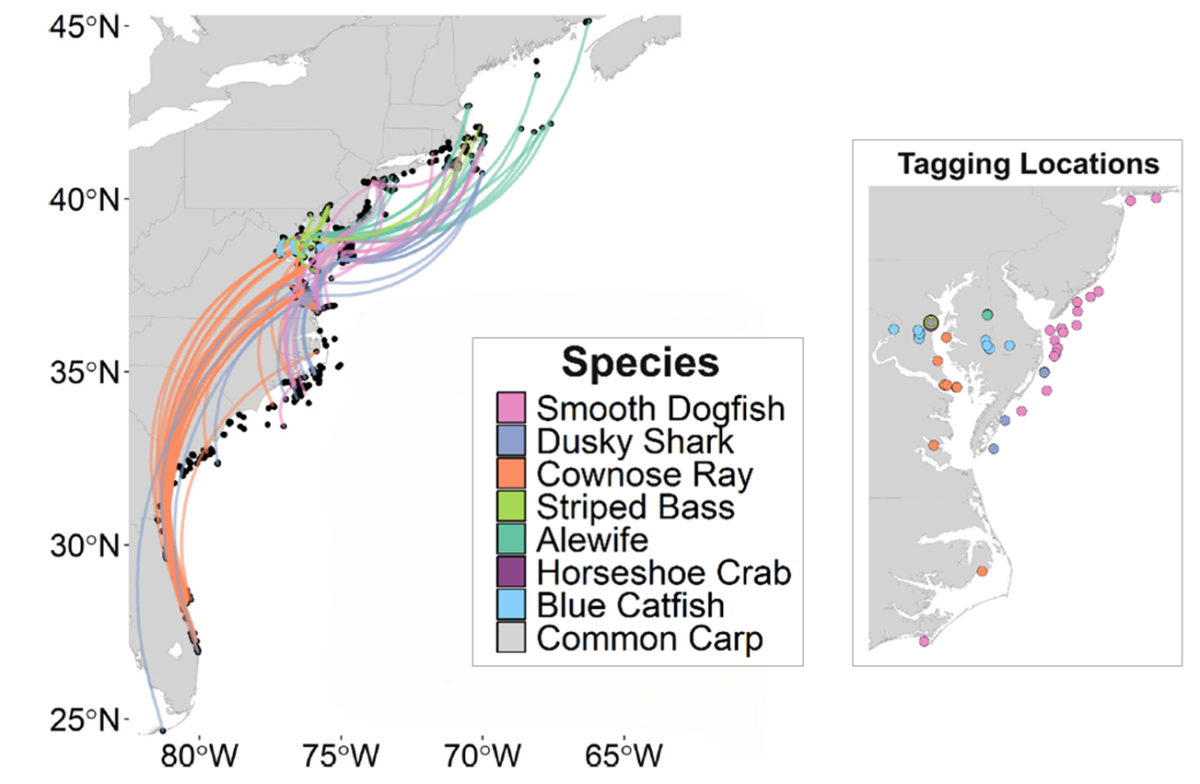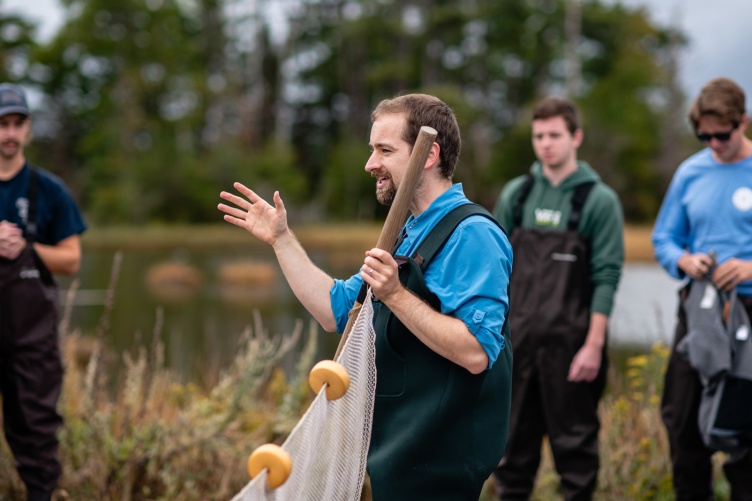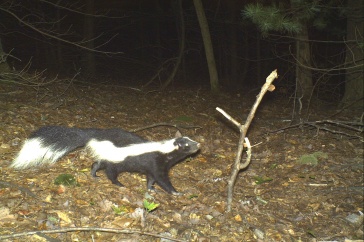Tracking Alewife Migrations from Bay to Gulf
In a separate study co-authored by Furey and Livernois and led by collaborator Matthew Ogburn, a senior scientist with the Smithsonian Environmental Research Center, researchers used acoustic telemetry to track alewife (Alosa pseudoharengus) migrations between the Chesapeake Bay and the Gulf of Maine. This research demonstrated the full annual migration cycle of alewife and highlighted how collaborative telemetry networks can offer new insights into the timing of migrations and environmental factors influencing these movements, such as water temperature. The data revealed that alewife extensively use both tidal and non-tidal portions of rivers during spring and migrate to rapidly warming summer habitats.
"One of the most significant findings was how these fish migrated within a specific range of temperatures, which is important to consider as alewife move through increasingly warmer waters in their summer habitats," Furey explained. "By tracking these movements, we're better able to predict how environmental changes may impact their migration routes, which is crucial for managing these populations effectively, particularly as these fish can be caught as bycatch in other fisheries."
To learn more about this research, read Acoustic telemetry captures the full annual migration of alewife between Chesapeake Bay and the Gulf of Maine, published in the Marine Ecology Progress Series.
New England’s fisheries depend on tracking the seasonal rhythms of marine life, and researchers at the University of New Hampshire’s College of Life Sciences and Agriculture (COLSA) are using acoustic telemetry networks to uncover new insights about migratory patterns of aquatic species. Their findings, published in the Journal of Fish Biology, show how underwater receivers that receive acoustic signals from transmitters on fish and invertebrates can track the species’ long-distance movements, connecting far-apart ecosystems ranging from cool New England waters to Florida’s tropical bays.
“This study allowed us to see how species use both estuarine and coastal habitats near and far,” said lead author Mariah Livernois, a former UNH postdoctoral researcher now conducting research at the University of South Carolina's Baruch Marine Field Laboratory. “By working with collaborative telemetry networks, we can track species over large areas, providing critical data on their seasonal movements and habitat use.”
Led by Livernois and Nathan Furey, an associate professor in UNH’s department of biological sciences, the study followed the movements of 288 tagged individuals from eight species of fish and invertebrates, including striped bass, blue catfish, cownose rays, smooth dogfish, alewife, horseshoe crabs, common carp and dusky sharks. Their findings revealed patterns across species: coastal migratory species like cownose rays and striped bass exhibited seasonal migrations, sometimes covering thousands of miles. Many use Chesapeake Bay as a key habitat for reproduction or juvenile rearing before continuing to northern and/or southern regions. The extensive movement data underscores the connectedness of waterbodies along the Atlantic seaboard, with species frequently traveling between distinct geographic regions throughout year.
For New England’s fishing and conservation communities, understanding these migration patterns helps pinpoint key habitats and the timing of species movements, providing valuable data to help guide sustainable management practices as climate change reshapes marine environments.
“These animals don't recognize borders, so our management strategies must reflect the scale of their movements,” Furey noted. “By understanding when and where these species travel, we can coordinate efforts to conserve their habitats and manage fisheries sustainably.”
The acoustic telemetry network, spanning the U.S. Atlantic coast, provided researchers with extensive spatial coverage, allowing them to track animal movements across more than 20 degrees of latitude—from Florida to New Brunswick, Canada. While acoustic telemetry offers valuable insights, it also presents challenges. Deploying and maintaining large-scale telemetry networks is labor-intensive and costly, requiring close collaboration among institutions.

However, as species movements are likely to shift in response to continued changes to water temperatures and habitats, finding innovative ways to overcome telemetry network implementation challenges and maintaining ongoing collaborative research efforts will be essential to understanding how marine species adapt to environmental and habitat changes.
“Collaborative data-sharing networks provide platforms for researchers to track highly mobile animals across much greater scales than previously possible,” added Livernois. “Working together as a group of telemetry users has been, and will continue to be, critical to understanding the movements of aquatic animals.”
This work is co-authored by Mariah Livernois, Matthew Ogburn, Henry Legett, Kimberly Richie, Robert Aguilar, Keira Heggie and Nathan Furey.
The full studyTracking animal movements via collaborative acoustic telemetry networks: Multiscale habitat use, phenology, and management insights, is available in the Journal of Fish Biology.
This material is supported by the National Marine Fisheries Service, Grant/Award Numbers: NA21NMF4570525, NA18NMF4570255; the UNH School of Marine Science and Ocean Engineering; Aramco Services Company; the Curtis and Edith Munson Foundation; Office of Under Secretary for Science and Innovation.
-
Written By:
Nicholas Gosling '06 | COLSA/NH Agricultural Experiment Station | nicholas.gosling@unh.edu


























































